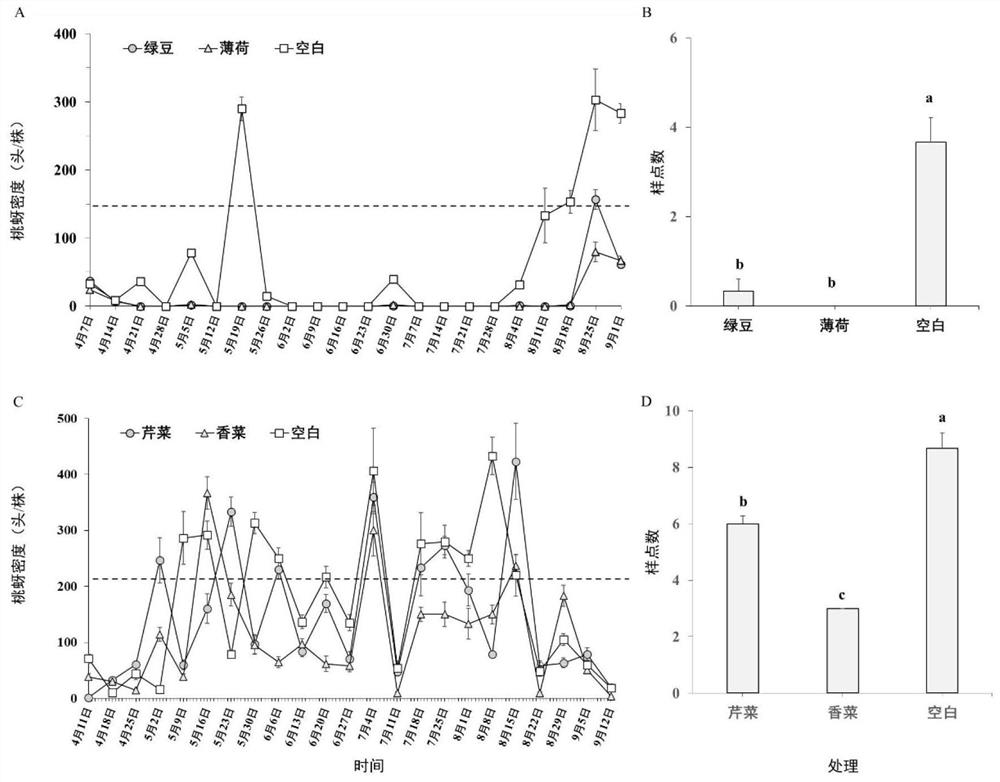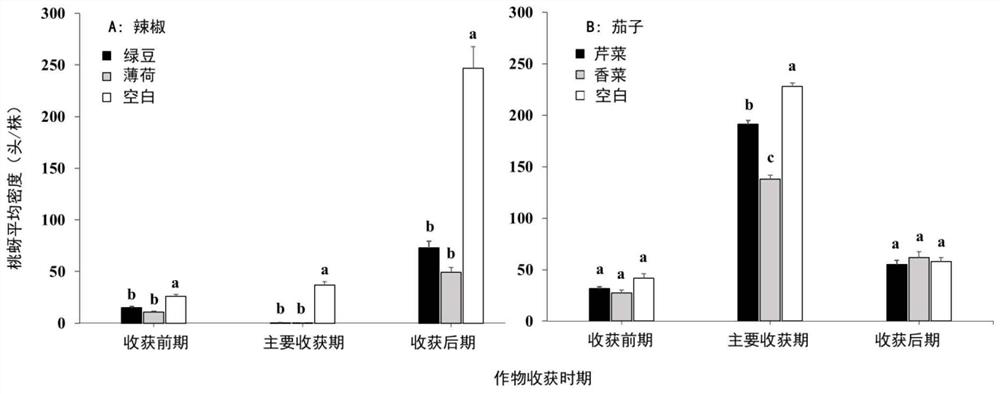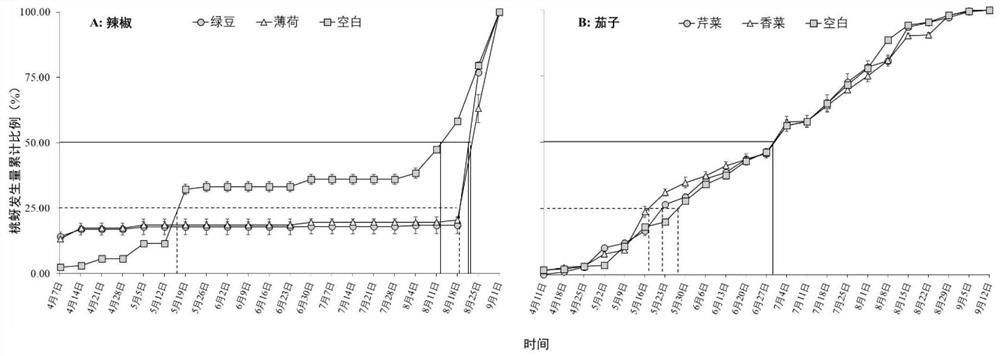Repellent plant management method for preventing and controlling green peach aphids in greenhouse
A management method and repelling technology, applied in the fields of botanical equipment and methods, plant cultivation, plant protection, etc., can solve problems such as research on unrepellent effects, achieve significant ecological and economic benefits, achieve safe production, and reduce obstacles. Effect
- Summary
- Abstract
- Description
- Claims
- Application Information
AI Technical Summary
Problems solved by technology
Method used
Image
Examples
Embodiment 1
[0027] Embodiment 1, the control of the repellent plant management of greenhouse green peach aphid
[0028] For the control of peach aphid in the greenhouse, mung bean and mint were used as repellent plants.
[0029] (1) Half a month before pepper planting, the mung bean seeds were broadcast live at a plant spacing of 50 cm at the vent under the greenhouse, and the mint 4-leaf stage seedlings were transplanted and planted in 2 rows.
[0030] (2) After two months, appropriate management such as leaf thinning and top removal should be carried out once a month to ensure that the growth of the repellent plants is controlled and the ventilation function of the vents is not affected.
[0031] (3) Use the organic vegetable management standard to carry out daily agricultural operations. After 17 days of pepper planting, start to regularly investigate the number of peach aphid on pepper plants. Randomly investigate 2 leaves in each of the , middle and lower layers, and record the numb...
Embodiment 2
[0036] Embodiment 2, the management of repellent plants of preventing and controlling green peach aphid
[0037] For the control of green peach aphid in the greenhouse, coriander and celery were used as repellent plants.
[0038] (1) Half a month before the eggplants were planted, the coriander seeds were broadcast live at a plant spacing of 50 cm at the vent under the greenhouse, and the 4-leaf stage celery seedlings were transplanted and planted in 2 rows.
[0039] (2) After two months, the top removal management is carried out once a month to ensure that the growth of the repellent plants is controlled without affecting the ventilation function of the vents; and new seedlings are raised for later replanting. After three months, the celery and coriander can be cut in batches, and new seedlings can be replanted to ensure the continuous repelling effect on the green peach aphid.
[0040] (3) Use the organic vegetable management standard for daily agricultural operations. Afte...
Embodiment 3
[0045] Embodiment 3, the influence of repelling plants on the individual and population growth of Myzus persicae
[0046] The leaf disc method was used to clarify the effect of repellent plants on the individual growth of Myzus persicae. Pepper leaves with the same size and status and repellent plant leaves (about 3.0 g) with the same size and status were selected, and the treatment group was set: 1 pepper leaf and repellent plants Leaves were placed on both sides of the petri dish, and a control group with only one pepper leaf was set. The leaves were placed in a plastic petri dish (D=14cm, H=2cm), and the petioles were wrapped with moist absorbent cotton to maintain leaf activity. 20 8-day-old Myzus persicae were released in the middle of the dish, and each treatment was repeated 20 times. The location and number of peach aphid were recorded at 1 and 2 hours, respectively. Peach aphid repelling rate: RI=(C-P) / C*100%, P is the number of peach aphids in the treatment group, a...
PUM
 Login to View More
Login to View More Abstract
Description
Claims
Application Information
 Login to View More
Login to View More - R&D
- Intellectual Property
- Life Sciences
- Materials
- Tech Scout
- Unparalleled Data Quality
- Higher Quality Content
- 60% Fewer Hallucinations
Browse by: Latest US Patents, China's latest patents, Technical Efficacy Thesaurus, Application Domain, Technology Topic, Popular Technical Reports.
© 2025 PatSnap. All rights reserved.Legal|Privacy policy|Modern Slavery Act Transparency Statement|Sitemap|About US| Contact US: help@patsnap.com



